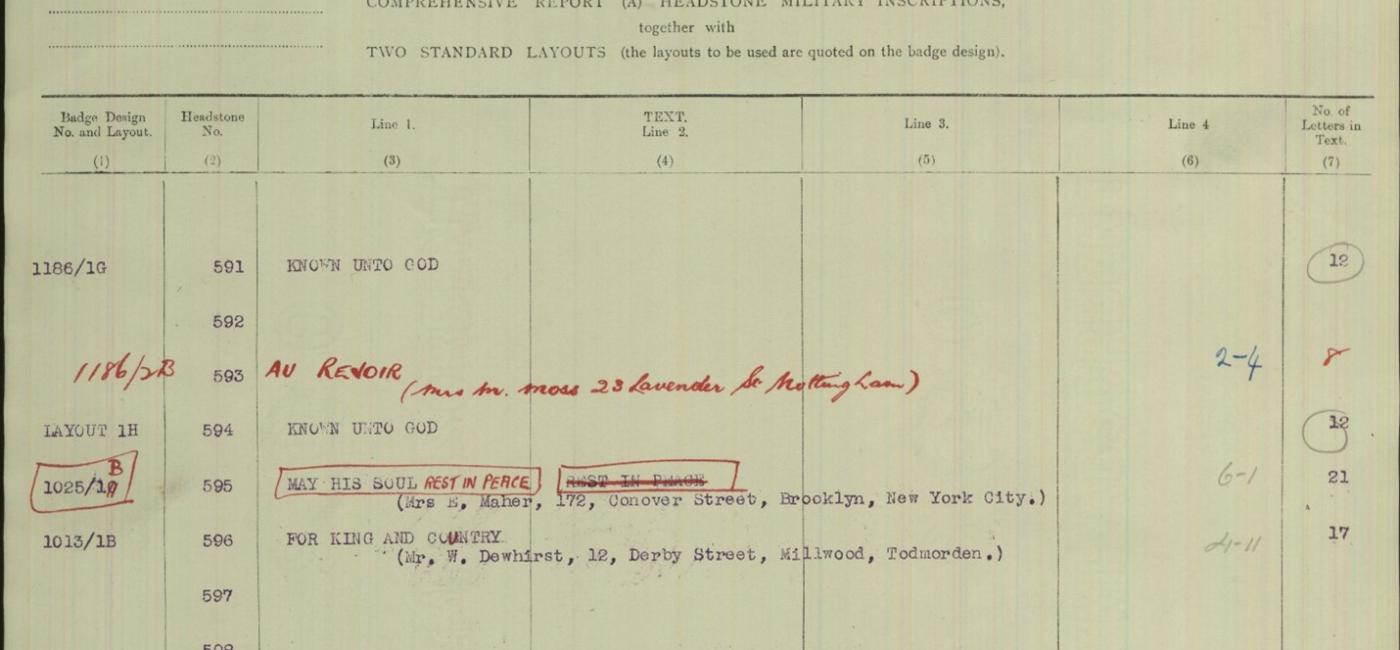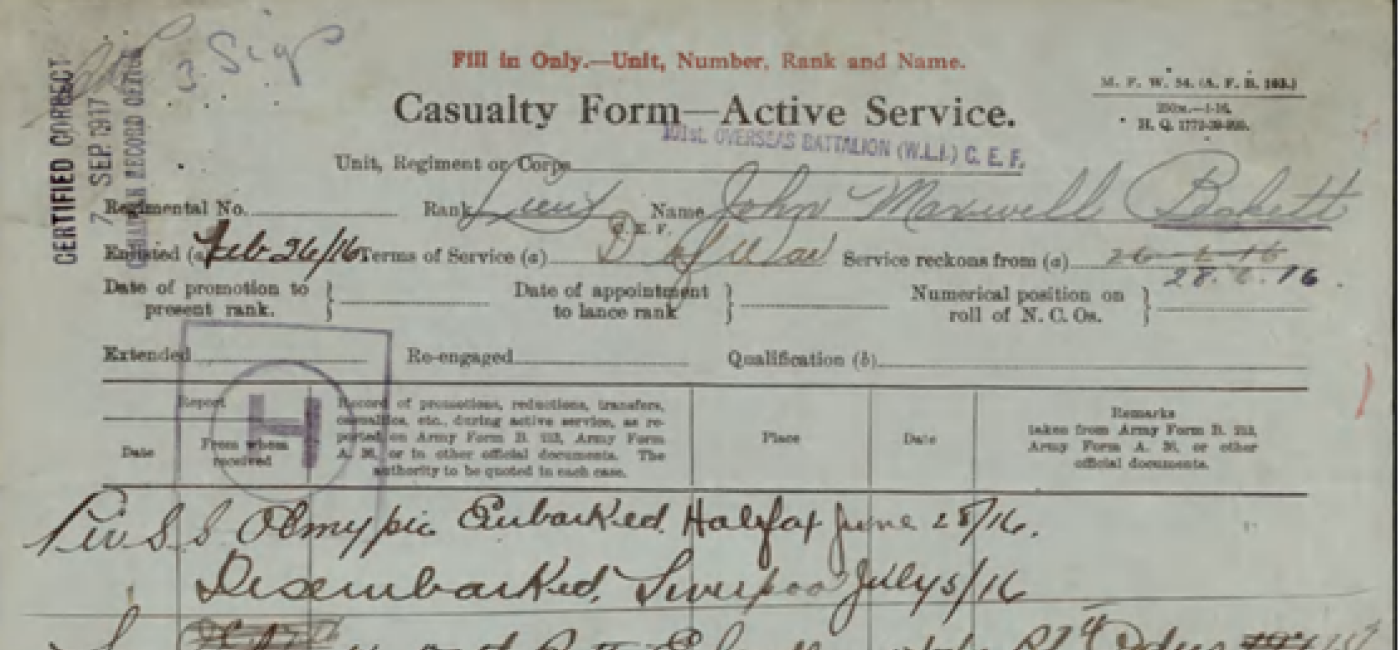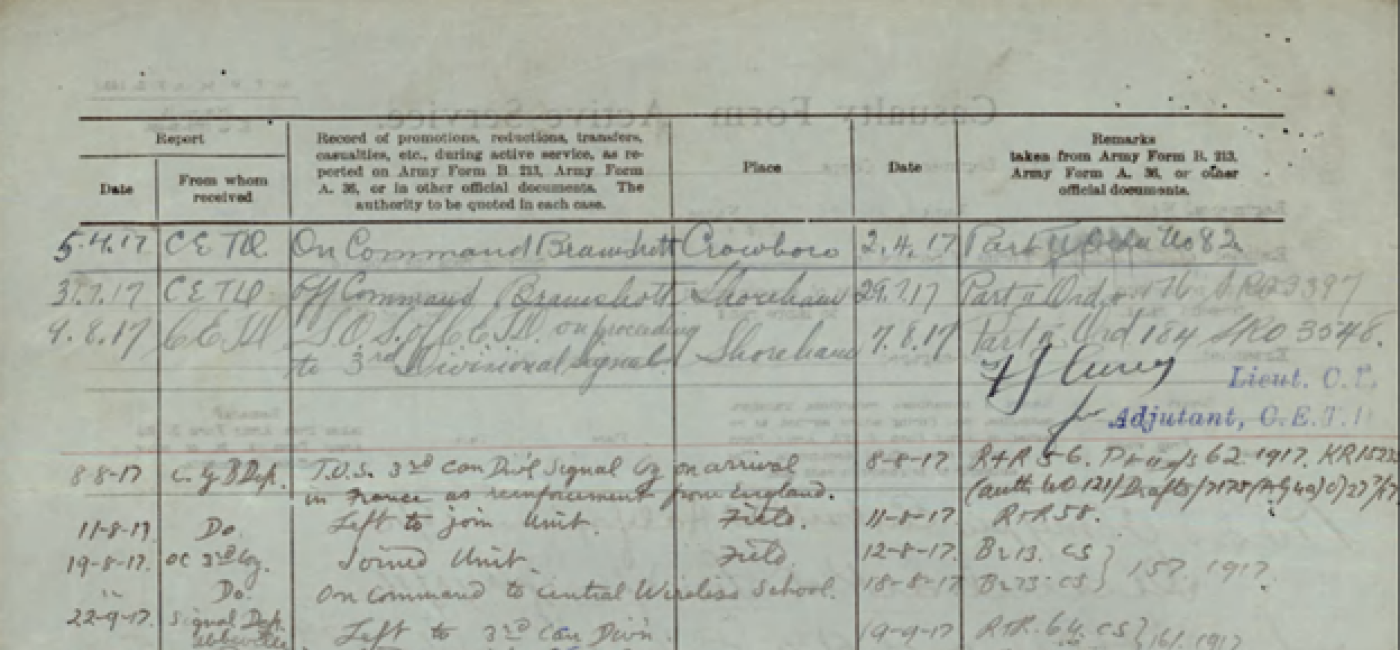Dear MCEM Friends,
Welcome to the August 2023 edition of The Despatch, the Military Communications and Electronics Museum Newsletter!
80 years ago! Operation Husky: The Invasion of Sicily Part 3- August 1943
"Operation Hardgate” was in full swing on August 1, 1943.
Begun on the 29th of July, this was a pincer maneuver to capture Adrano. On one pincer was the 1st Canadian Division at Regalbuto and the other was the 78th Division, supplemented with the 3rd Canadian Brigade.
The Germans, particularly the Panzer-Division Hermann Göring, were told to hold the line, but had been bombed continually by the RCAF flying out of Tunisia. Once again, the Panzer-Division Hermann Göring were matched against the Canadians in Regalbuto.
The map below comes from Official History of the Canadian Army in the Second World War, Volume II, THE CANADIANS IN ITALY, 1943-1945 pg. 148. https://www.canada.ca/en/department-national-defence/services/military-history/history-heritage/official-military-history-lineages/official-histories/book-1956-army-ww2-2.html This is a great illustration of just how mountainous the conditions were in Sicily.
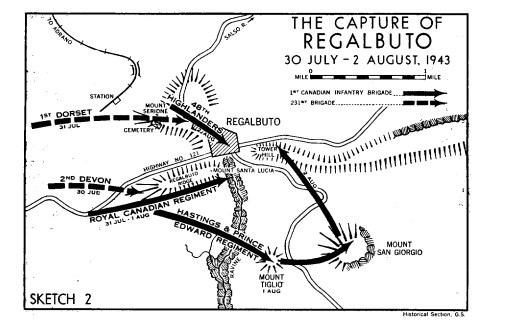
Due to this terrain, mules were used to transport almost everything, including the wireless No.22 set. This newest method of transportation often carried a No. 22 set on one side with two six-volt batteries on the other. The operator could walk alongside with microphone and earphones plugged to his set. It was not uncommon for the mules to also be burdened with rifles and other articles of kit. Mules were sometimes obstinate, died in combat and under fire would run away.
“When troops stopped for a break you dared not let the mules stop. They might decide not to go on again. If they saw a patch of delectable green grass they invariably forgot about the war. Once things became hot at BHQ and, perhaps because of the tracers flying around, my mule decided to retreat. This he did, unannounced, leaving me holding the microphone and earphones.” History of the Royal Canadian Corps of Signals, pg. 130.
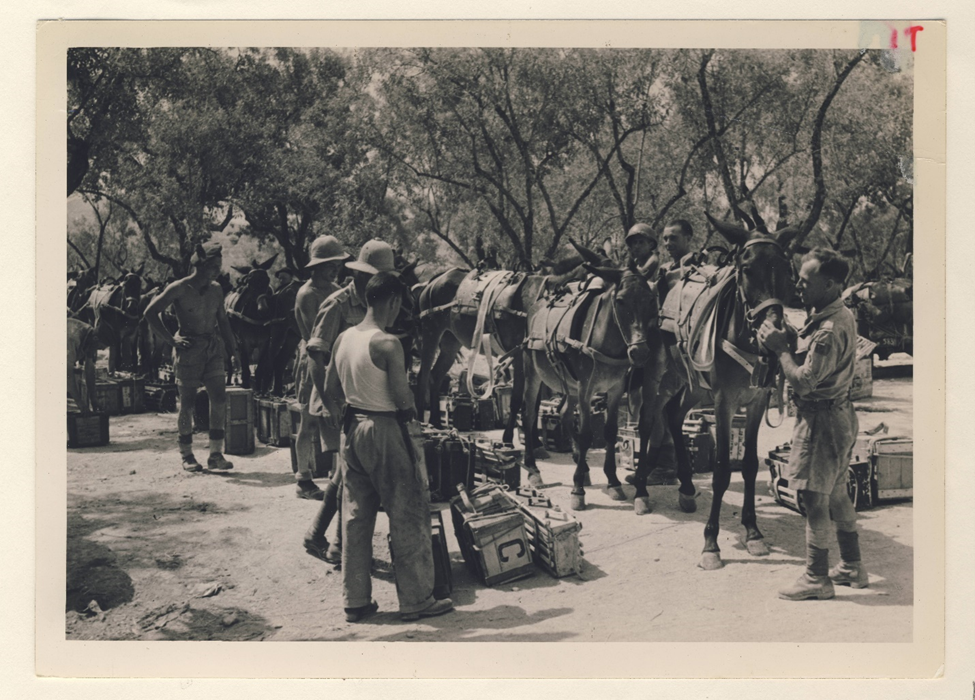
Despatch Riders were sometimes the only way of reliable communications with the hilly terrain. For this reason, every time Major-General Simonds wanted to see the front line, first by jeep and then by tank, he was accompanied by a Despatch Rider as back up. The General’s jeeps would have one or two wireless sets and carry an operator for the tank set so he could be in constant contact with Headquarters and formations. Signallers found that the need for providing wireless communication for their commanders meant their primary assignments were as part of the "commander's rover". Mobile wireless was a must on the fluid battlefield.
Regalbuto was captured on August 2, 1943.
“When the Canadians entered Regalbuto on the heels of the occupying troops of the Malta Brigade, they came upon a scene of destruction far more extensive than any they had previously encountered in Sicily. The town had received a full share of shelling and aerial bombardment, and hardly a building remained intact. Rubble completely blocked the main thoroughfare, and a route was only opened when engineers with bulldozers forced a one-way passage along a narrow side-street. For once there was no welcome by cheering crowds, with the usual shouted requests for cigarettes, chocolate or biscuits. The place was all but deserted; most of the inhabitants had fled to the surrounding hills or the railway tunnels. They were only now beginning to straggle back, dirty, ragged and apparently half-fed, to search pitifully for miserable gleanings among the debris of their shattered homes.” Official History of the Canadian Army in the Second World War, Volume II, THE CANADIANS IN ITALY, 1943-1945 pg. 152
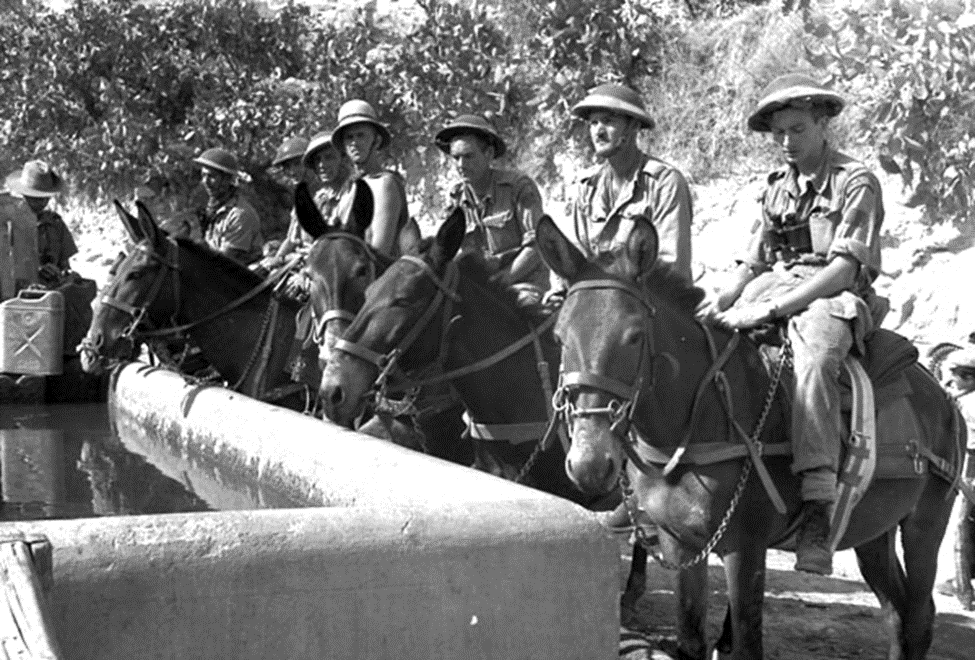
Catenanuova was captured on July 30th by the 3rd Canadian Brigade and the push to Centuripe began with the 78th Division in command. Centuripe fell on August 4, 1943.
Now the final push to Adrano began.
“The 1st Canadian Division was told to take Adrano. Major-General Guy Simonds tasked 2nd Canadian Infantry Brigade’s commander, Brigadier Chris Vokes, with the operation. In turn Vokes created a battle group based on the Three Rivers Regiment and the Seaforth Highlanders of Canada, along with reconnaissance, engineer and artillery units. The commanding officers of the two major units met and concocted a plan that would see the infantry mounted on the back decks of the Three Rivers Regiment’s Sherman tanks. Preceded by a reconnaissance squadron from the Princess Louise Dragoon Guards, the force set out at first light (0600 hours) on 4 August. The first holdup was the railway bridge crossing the Salso River. The engineers had to be called forward to assist. Once across the obstacle the force gathered momentum. Closing in on the village of Carcaci, to the west of Adrano, the infantry dismounted. Fortunately, the enemy had no anti-tank guns. The Canadian tanks used their high explosive main armament rounds and their tracer machine gun ammunition to set fire to the dry grass and shrubs in the area. This had the effect of driving the German defenders from their cover. The village itself was pounded by the artillery. By mid-afternoon the objective had been taken with only light casualties to the Canadian force. With the Canadians now situated on the high ground overlooking Adrano, the Germans abandoned the town and retired to the north.” Credit: https://www.canada.ca/en/department-national-defence/services/military-history/history-heritage/battle-honours-honorary-distinctions/adrano.html
On 7 August the Canadian 1st Division camped at the foot of Mount Etna and went into reserve. Ten days after the 1st Division went into reserve, 17 August, marked the final victory in Sicily and the end of a short but trying campaign in which communications had played a vital part. Canadian soldiers had fought continually from July 10-August 7, 1943 and had proved their combat effectiveness.
By September, the Canadians would be landing on the shores of Italy.
Karen Young, Museum Manager
From the Foundation: “Buy a Cappuccino” for the Museum
The Despatch is a new newsletter developed for the C&E community by the C&E Museum. Its goal is to provide a means to keep members of the community informed about items of interest so that all members, past and present, can continue to connect with their friends and the work done to maintain communications for the Canadian Forces for the past 120 years.
The C&E Museum provides an anchor for the many members who have served in Land, Sea and Air operations as communications and technical specialists. Without them, the success of Canadian Forces operations over the years could not have occurred. The Museum works diligently to develop more and better ways to provide all members, regardless of where they are, with the opportunity to stay in touch with former colleagues, remain connected to their time in service, and participate in the development of new technologies for the battlefield of tomorrow.
While we cannot all be located close to the Museum’s bricks and mortar, the spirit, and the images of what the museum has to offer can be available for all to enjoy. It provides digital access to the museum displays; means to relate anecdotes and stories of events that occurred that do not make the history books; ways for maintaining contact with retired comrades and friends now scattered across Canada and around the world; as well as information about the many tasks undertaken by serving members.
As a visitor, it is fun and often nostalgic to see the old equipment, remember a time when you were one of the operators, or you repaired a critical fault or problem. However, it takes a lot of time and energy to find, organize, develop, and maintain the displays, as well as provide information for distribution. Problems that are not obvious, like radiation protection for visitors from some of the material on display, are sometimes difficult to address. People often want to touch museum artifacts, which can result in the equipment on display being damaged. All of this is to remind both serving and retired folks that it takes both money and human dedication to build and maintain a museum as well-managed and recognized as the C&E Museum.
The Museum also can be seen as a means for staying connected once serving members retire or current members are posted to other locations. It offers a way to connect with the friends developed over the years who could otherwise “disappear” after retirement or with postings. The odd reunion helps to bring friends together for a day or two but cannot substitute for the broader connections that can be made through a vehicle like the Museum.
Serving members are asked to donate $5.00 per month to the C&E Foundation to help fund the Museum’s various programs. This represents “1 cappuccino per month” dedicated to finding ways to help comrades stay in touch. Think of it as an “insurance policy” to keep alive the memories and contacts developed while serving.
The retired community and interested others can also contribute to the museum through “Canada Helps”. This program funds the Museum’s good work, including documenting legacy stories and information for your children and grandchildren.
Leadership comes from the top, so let’s demonstrate a renewed commitment from the leaders, both past and present, to improve support to the museum, we can then inspire all members both serving and retired to take a moment to remember their time in service and “buy a cappuccino” in the form of a small donation to that memory through the displays and programs developed by the Museum.
Bill Cowperthwaite, Board Member, Military Communications and Electronics Museum Foundation
CanadaHelps Great Canadian Giving Challenge
To those that donated Thank You! The CanadaHelps Great Canadian Giving Challenge $20000 prize was won by RiverCross Church in Saint John, New Brunswick! The Military Communications and Electronics Museum Foundation raised $5210 to support education programs at the museum and the creation of new exhibits!
Paddling Puppeteers Are Back!
Join us for two performances by the Paddling Puppeteers on August 23 at the museum. Fun for the whole family.

Doors Open Kingston!
Join us for a free day at the museum on August 26! We will be open from 1000-1600. No admission fees will be charged.

Coffee with Veterans
Our next Coffee with Veterans is August 8 at 1000. All are welcome! Proudly sponsored by ADGA! www.adga.ca

Mercury Shop
The Mercury Shop makes custom engraved or sublimated items at the shop. Have a special event and want to create something unique? Bring your designs to us and we can place them on glass, ceramics, wood, and steel. We have even engraved leather!
As always, the Mercury Shop has a wide range of military accoutrements available as well as our medal mounting service all year round. Currently, we have summer hours from 1000-1545.
For more information about any of our other services, please reach out to the Mercury Shop by phone 613-541-5395 or email mercuryshop@candemuseum.org
Leala Hampel, Mercury Shop Supervisor
Not Forgotten – Lieutenant John Maxwell Beckett

References:
A. www.rcsigs.ca/index.php/Signals_Casualties_of_the_Great_War
B. https://www.veterans.gc.ca/eng/remembrance/memorials/books/units-orders-ranks-decorative-pages/ww1_units03
C. https://central.bac-lac.gc.ca/.item/?op=pdf&app=CEF&id=B0575-S038
D. https://www.cwgc.org/find-records/find-war-dead/casualty-details/454348/john-maxwell-beckett/#&gid=3&pid=1
John Maxwell Beckett was born 2 March 1888 in Sherbrooke, Quebec. Sometime before his enrollment with the Canadian Expeditionary Force (CEF), he was married to Elizabeth Evans. They had two children, E.W. Beckett, and J.M. Beckett. Beckett enrolled with the CEF on 26 February 1916 in Winnipeg, Manitoba, at the age of 27. In June of the same year, he was posted to Halifax, and transferred to the 17th Battalion. In September, he was posted to the Canadian Engineers Training Depot, likely for occupation training in Crowborough, UK.
At the end of September 1916, Beckett fell ill with Influenza, and was moved to the military hospital in Shorncliffe (near Dover). A week later, he was back on his feet and discharged, deemed fit for service.
On 8 August 1917 he was deployed with the 3rd Canadian Division Signals Company to France. He arrived and officially joined the unit on 12 August 1917, with the location listed as “field.” Only one month later, he was sent to attend the Central Wireless School, returning to the field on 20 September 1917.
On 21 October 1917, Lieutenant John Maxwell Beckett was reported killed in action at the age of 29. He was laid to rest in the White House Cemetery, St. Jean-Les-Ypres in Belgium. His headstone, commissioned by his wife, Elizabeth, reads:
“BELOVED HUSBAND OF E. EVANS
AND FATHER OF
E.W. AND J.M. BECKETT
WINNIPEG”
Capt Sean Maas-Stevens, CFSCE


